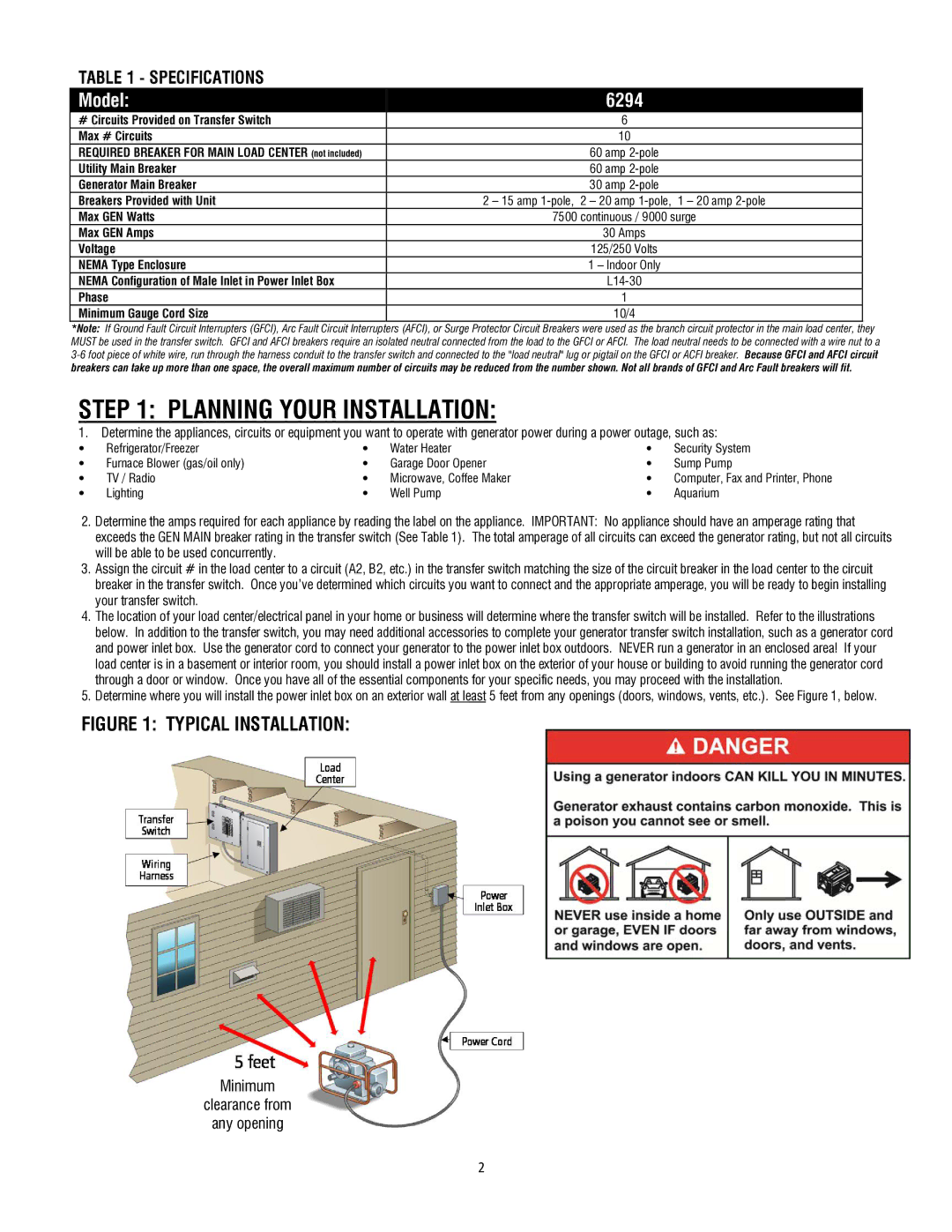6294 specifications
The Generac 6294 is a powerful home standby generator designed to provide reliable backup power during outages. With a robust engine and advanced features, it ensures that homes remain powered even in the face of severe weather or utility interruptions. One of the standout characteristics is its capacity to provide up to 22 kilowatts of power, allowing it to support essential appliances and systems throughout the home. This high output provides peace of mind knowing that even a large household can maintain functionality during a power failure.One of the main features of the Generac 6294 is its automatic operation. The built-in Smart Switch continuously monitors utility power and automatically starts the generator in case of a blackout. This automatic transfer switch is a significant technological advancement, allowing homeowners to avoid manually starting a generator when an emergency occurs. The generator can run on either natural gas or propane, providing flexibility depending on the homeowner's energy source preference.
The 6294 incorporates Generac’s patented Quiet-Test technology, which allows the generator to run at a lower RPM for a brief period during a weekly self-test. This feature ensures that the generator remains operational while minimizing noise, making it less disruptive to the household and the surrounding environment. Furthermore, the system is equipped with a durable weather-resistant enclosure, safeguarding the unit from the elements, and enhancing its lifespan.
Another important characteristic of the Generac 6294 is its user-friendly interface. The LCD display provides real-time information, including power output and maintenance alerts, allowing users to monitor their generator's performance easily.
The generator also features low-tone mufflers that reduce operational noise, ensuring that it runs quietly compared to traditional generators. This focus on noise reduction makes the 6294 an excellent choice for residential areas where disturbances during power outages should be minimized.
Additionally, the Generac 6294 is designed with an emphasis on safety. It includes features such as overload protection and an engine shut-off system to prevent damage and maintain safe operation. As a result, homeowners can rest easy knowing their generator is equipped with the necessary safeguards.
In summary, the Generac 6294 stands out as a reliable, efficient, and user-friendly standby generator. With its high power output, automatic operation, advanced technology, and robust safety features, it represents an ideal solution for homeowners seeking a dependable backup power source.

